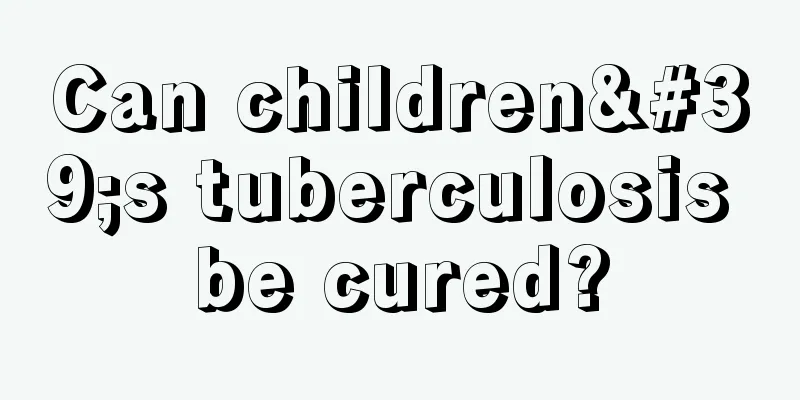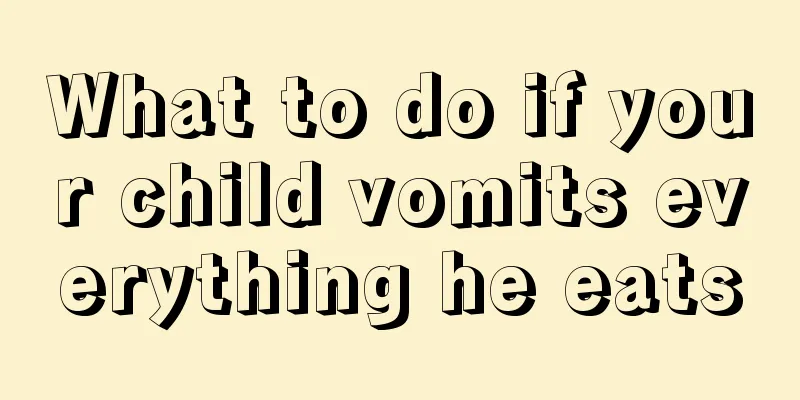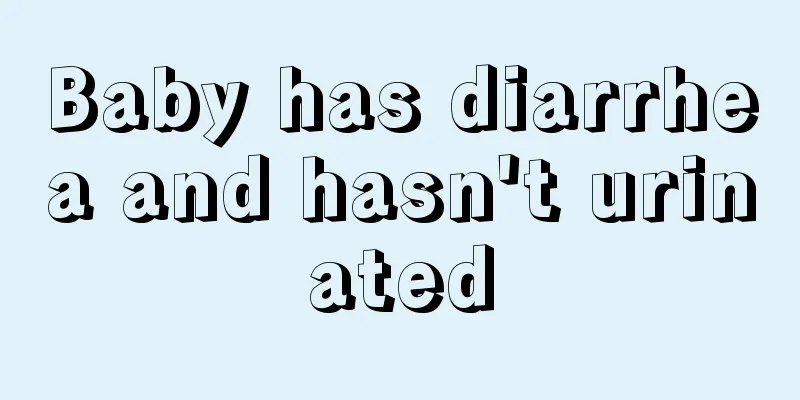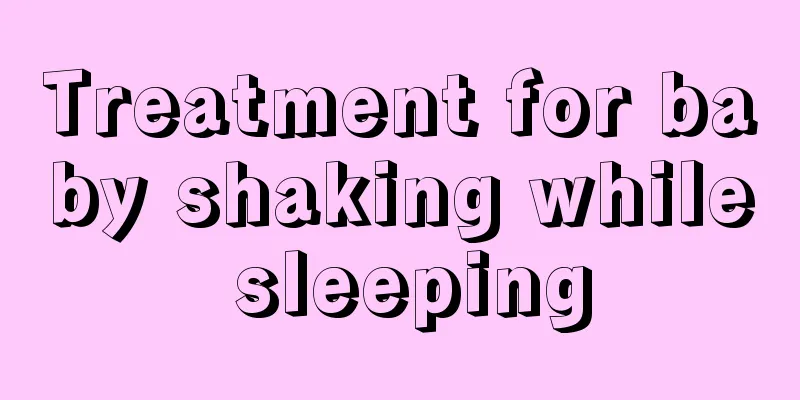Some care methods for children with fever and sweating
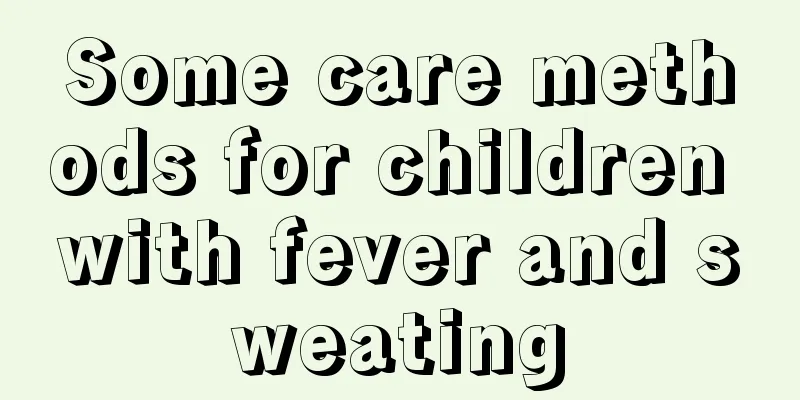
|
What should you do if your child has a fever and sweats? Can you give your child a bath in time? What is the best way to deal with it? I believe these questions are questions that many new mothers will encounter. So, should you give your child a bath when your child has a fever and sweats? Now I will introduce the care and treatment methods for children with fever and sweats. I hope every parent can understand this. First, heat dissipation The experience of adults may not be suitable for children, because children's heat dissipation mechanism is not perfect. If they cover themselves too much when they have a fever, the heat will not dissipate, making the fever higher. In severe cases, dehydration and fainting may occur. If parents find that their children have a fever, they should initially use certain physical methods to cool them down, such as reducing the amount of clothing and bedding for the children, wiping the children's bodies with warm water at about 37 degrees Celsius, and if it is summer, opening windows and turning on fans for ventilation, but be careful not to blow directly at the children. If the temperature cannot be reduced effectively, you should go to the hospital immediately. With the cooperation of the doctor, first find out the cause of the child's fever and then carry out targeted treatment. Second, when the body temperature is above 38.5 degrees: consider using antipyretics Generally, antipyretics should be considered when the baby's body temperature is above 38.5 degrees Celsius, and there must be a four to six hour interval between each dose of the medicine. Commonly used antipyretics include liquids, tablets, suppositories and injections. Third, water It is milder and safer. The most commonly used is syrup containing paracetamol, such as children's Motrin syrup, children's Baifuning drops, etc. 4. Tablets Because it is difficult to feed medicine to babies, this type of antipyretic medicine is rarely used, and most of it has been replaced by various antipyretic syrups. Fifth, suppositories It is used to plug the anus and is absorbed by the rectum. It has a quick effect and can reduce fever when the child refuses to take medicine. However, it is rarely used because frequent use can easily lead to excessive fever reduction, causing the body temperature to drop too quickly, or repeatedly irritate the anus and cause diarrhea. 6. Injection Large fever-reducing injections are the least safe, and some babies may even suffer allergic shock. However, there is currently no allergy test for antipyretic injections. Therefore, unless oral antipyretic drugs cannot be used (such as severe vomiting or fasting) and rectal suppositories cannot be used (such as severe diarrhea), and the fever cannot be reduced after all other methods have been exhausted, antipyretic injections will only be considered as a last resort. Seventh, when the body temperature is above 39 degrees: use a cold water pillow In addition to taking antipyretic drugs, you can use a cold water pillow to use the lower temperature for local heat dissipation. The soft cold water pillows currently on the market are very convenient and the temperature is not too low, so they can be used by older infants and children. However, it is not recommended for infants under six months old, because it is difficult for infants to turn their bodies, which may cause local overcooling and frostbite or hypothermia. 8. When the body temperature exceeds 40 degrees: warm alcohol bath Using warm alcohol to wipe the body can lower the temperature of the whole body. Please note that you must use "warm water" plus 70% alcohol, diluted in a one-to-one ratio. The diluted water temperature should be about 37 to 40 degrees, and then wipe the limbs and back. If you wipe directly with alcohol, the baby will feel very cold, very uncomfortable, and even convulse. After wiping, you can cover your body with a bath towel and wait for five to ten minutes. When the alcohol is almost evaporated and the blood in the body circulates to the body surface, making the skin warm again, repeat it a second time. Repeat this about three times, and the temperature inside and outside the body will drop rapidly. Because it reduces fever quickly, this method is suitable for babies over one year old and can be used when the body temperature is above 40 degrees and is difficult to reduce. Ninth, when shivering: add appropriate clothes If your baby's limbs are cold and he or she is shivering violently (chills), it means he or she needs warmth, so cover him or her with an extra blanket. 10. When sweating: reduce clothing appropriately If your limbs, hands and feet are warm and your whole body is sweating, it means you need to dissipate heat and you can wear less clothes. When young children have a fever and sweat, many parents worry that wet clothes are not good for their children's health, so they rush to take their children to take a bath. You should know that this practice is quite dangerous. After sweating, the child's pores are open. Once the cold air enters the child's body through the pores, the child's condition will become more serious. Therefore, mothers are best to care for them according to the content of my article above. |
<<: Why does a child cough and have repeated fever?
>>: What are the first aids for children with fever in the middle of the night?
Recommend
How to lose weight for obese children
Nowadays, with the improvement of quality of life...
What are the early symptoms of encephalitis in children?
Encephalitis is a very serious disease. If it occ...
What are some tips for getting your baby to take medicine?
Everyone will get sick. Adults often have symptom...
Child development age
There are certain limits to the age of children&#...
What causes lower respiratory tract infection in children?
Children have weaker immunity and are therefore m...
Is patent ductus arteriosus easy to treat? What is the detection method?
Patent ductus arteriosus is a very rare disease i...
Why is the baby's tongue black?
The oral health of babies is very important and i...
What should I do if my four-month-old baby sweats a lot?
Taking care of a baby is a meticulous job, especi...
Newborn vomits amniotic fluid
Many mothers, when they meet their babies after g...
What is the quickest way to cure a child's cough?
Everyone knows that expectant mothers will pay sp...
Baby milk leaking from mouth
It is normal for babies to have milk in the corne...
What should I do if my child has hydrocele?
Pediatric hydrocele is a disease that occurs in y...
What are some foods that are easy for children to digest?
Children's gastrointestinal function is relat...
What should I do if my newborn baby likes to stick out his tongue?
I believe everyone is used to seeing children sti...
What to do if children have cold hands and feet
Children's physical condition has always been...


